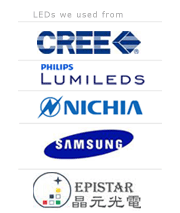News
Search
Popular search



Once three market indicators that signal the arrival of the maturing LED industry are reached, clients will no longer be focused on energy efficiency anymore, a China-led.org report cited Taiwan LED Lighting Industry Alliance Secretary Horng-Ching Hsiao saying at Green Lighting 2014 in Shanghai, China.
The indicators include visual index of Color Rendering Index (CRI) reaching 80 to 85, product performance index of lm/W 170 luminous efficacy, and market index arriving to lm/US $ 200, outlined Hsiao.
When LED chips luminous efficacy reaches the performance index, lighting systems luminous efficacy will peak to 135 lm/W, 85 lm/W for LED bulbs, and 125 lm/W for LED tubes, which surpasses T5 fluorescent tubes efficiency. As LED chip technology further advances, and luminous efficacy hits 200 lm/W, the lighting system efficiency calculated at about 75 percent to 80 percent will have a luminous efficacy of 160 lm/W. This system will exceed high pressure sodium lamps and all conventional light sources. Energy efficiency has been a basic feature in LED lighting.
With performance index moving out of the industry spotlight, solving glare issues will become a key in LED lighting applications. LED lighting reliability, stability and low lumen depreciation will become the market’s next focus.
When manufacturers develop LED lighting, they need to first understand what client and consumer demands are, and what they are concerned about.
Current industry trends show consumers are gradually turning away from performance to function. In the future, smart lighting and healthy lighting will become major focuses in the LED lighting market, said Hsiao.
LED lighting should possess functions including excellent lighting environment and be healthy for vision. Consumers also need to believe LED prices and installation costs are reasonable. Some clients will need highly efficient lighting equipment with convenient control systems, which requires taking into account ease of maintenance and equipment compatibility. In general, energy efficiency benefits and power costs need to be taken into consideration.
Although, LED light has lower power consumption, Hsiao emphasized recycling LED luminaires, reuse and other environmental issues surrounding the products have been completely ignored.
In addition, Hsiao noted many companies are still fighting alone in the industry and there has been little cooperation. The general scenario has been “Every man for himself.” In the face of challenges from large international LED lighting manufacturers, Chinese companies should form alliances and fight together. Forming a brotherhood and cooperating together will be more effective than going solo. SMEs especially will need to “have certain advantages to prevent being merged.”
Concluding his speech, Hsiao noted China’s LED industry needs to develop high class lighting products to escape low price products and costdown mentality to propel LED lighting industry development.
Hsiao is also an Associate Professor at the Department of Electrical Engineering, National Taiwan University of Science and Technology, and a researcher at the university’s Illuminating Engineering Research Lab.



